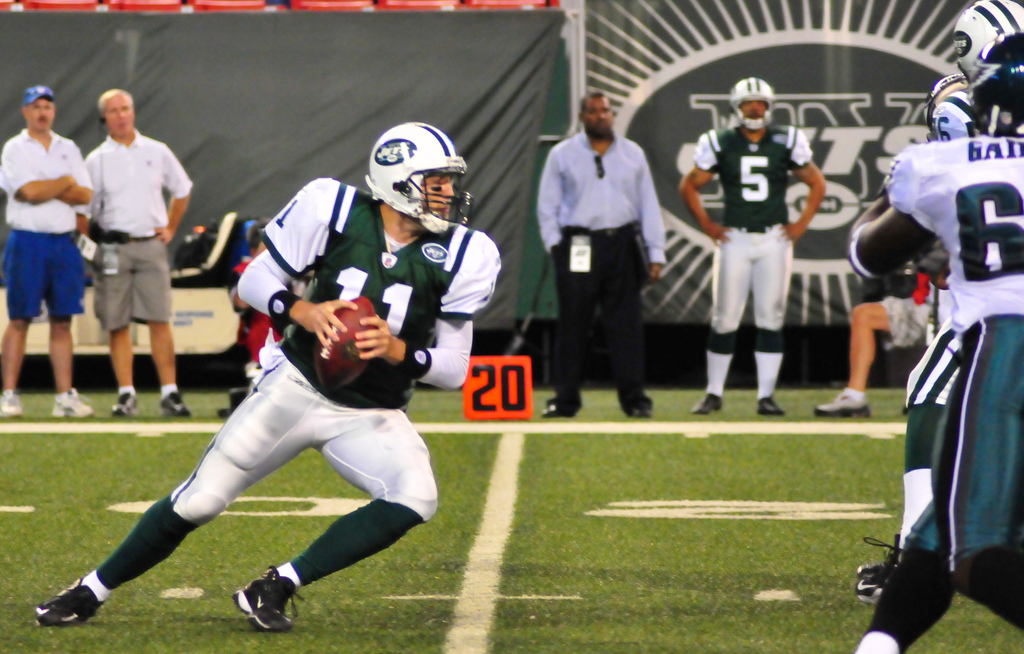Traditional business intelligence leaves executives with the same amount of work, but with even more information to sort through. The number of decisions, the unit of work, is not diminished.
Traditional Business Intelligence asks, “What information do you need to make better decisions?” The outcome is hopefully beautiful well designed reports and dashboard that support decisions. The problem is that you still have to make decisions.
Decisions are work. Having more information doesn’t reduce the amount of work required to make decisions. In fact, it makes decisions more work. More information does not create less work.
The flaw is thinking that the business decisions are calculations. (more…)
All posts tagged: Data Science
Empower the great the build something greater.
Rethinking Business Intelligence: Information or Decisions
When should you Update Predictive Models?
New clients often have questions about why and how frequently CAN needs to update their predictive models. Predictive models need to be updated because everyday new data is being created. For example, your customers are buying more, subscribing or unsubscribing. The environment is constantly changing. While predictive models can handle a lot of new new data, overtime environmental changes build up causing predictive models to lose their effectiveness. After a month, quarter, or a year it is necessary to update predictive models with new data.
As these new patterns emerge its important to periodically take time to investigate your data, update your models, and challenge your assumptions about your business. But how often should you do this?
(more…)
The Predictive Analytics Revolution – Are you sitting on the sidelines?
Predictive analytics (or Big Data) is here to stay. You may not understand it. You may not believe that it really works. But the reality is this: your competitors (and it may be just one or two of them) are using predictive analytics to chew up market space as you remain on the sidelines.
Don’t believe me? (more…)
How to become a data scientist
“How to become a data scientist?” is an interesting question, because there’s no real formal training as of yet to become one. Some universities are combining mathematics, computer science, and humanities classes together, but nothing formal has been decided in terms of a major or full concentration of study. Berkeley, Stanford, and the other greats have classes related to data science, but most classes are nestled within existing information technology or math departments. This is perhaps due to the idea that the position still isn’t properly defined, and “data scientist” is usually a catch all term for people with a variety of skills – some that even tend to conflict with each other. Most hard math or science majors are 1+1=2, end of story. Humanities tends to look at the world more abstractly and realize that there is leeway and not everything adds up. Data science requires much from both of these.
The requirements of people with these skills are also somewhat across the board, with specializations reaching from simple large scale data management and storage, to those who can apply analytics and machine learning or artificial intelligence to make predictions of the future or better apply recommendations to consumers ála Netflix, Amazon, Facebook, and Google.
Nonetheless, there are a specific set of skills you can work to develop and fields of study you can dabble in if you’re interested in working with data. While still somewhat vague, the ultimate purpose of today’s data science is to manage, make sense of, and ask questions of data sets.
Statistics
Applied data science is all about measurement, so work on increasing your statistical chops. In addition to being a general good life skill (probability and common statistics can be used in the media to manipulate human behavior or use to fear monger those into believing false or loosely defined relationships. Knowing even elementary statistics helps you spot bad science.)
Computer Science
Depending on the type of data science you’re into (management vs analytics, for example) a good understanding of computers is a strong skill to develop. Even if you’re interested in only mathematical applications, elementary programming classes can familiarize you with a certain logic and problem solving mindset useful in this space. Being familiar with database languages like MySQL, and the statistical language R, and even web technologies like HTML and PHP can help you write applications to gather data and make life much easier.
Economics / Biology / Bio – Informatics / Physics …
I’ve got a soft spot for my own field of study, economics. But any simple or complex science in which you model reality and try to describe it is useful for data science. Economics itself is the study of efficient allocation of limited resources, so many economic models are built to use data to describe processes and how firms and consumers interact, among many other things. Physics and Biology are also concerned with modeling their “ecosystem” and finding relationships between all of its actors. Being fascinated with how changing inputs changes the outputs is a good mindset to have, all while being able to approach it with a scientific method style of hypothesis testing.
Beyond University, there are a multitude of resources out there for learning how to play with data. MIT OpenCourseWare has a lot of free courses, many dealing with computer science, math, and other sciences. LinkedIn has lots of groups devoted to those who work in data. Try connecting with those people.

Data Science in the NFL: Finding the Right Players and Strategies
Who are the best NFL players and why? This is a question that NFL teams want to answer, or perhaps they just want confirmation. NFL teams spend a lot of money on scouts to find the best future players, and on staff to determine if their current players are up to par. Teams already have sources to tell them who are the best players and why. So why are some teams beginning to hire data scientists to analyze a players stats to determine his value? How does data science help determine whether a player is good or not?
With football being perhaps the most popular, talked about, and drama filled sport in America, NFL teams invest a lot of money to become the team that everyone talks about, pays to watch, pays to be endorsed by, and generally just pays. The best way to do this is to win a Super Bowl (or have Tim Tebow on your team).
How do you win a Super Bowl?

Diapers, Beer, and Data Science in Retail
When asked for white papers or case studies on how predictive analytics works, I often give a few stories on how different industries use analytics to find patterns in their data and then apply that knowledge to their existing data to predict what future trends are going to happen. Learn about how we applied predictive analytics to politics.
I get asked specifically about legends that roam the retail world: the study that found that milk is the most purchased item so it is always in the back of the store, making you walk by everything thing else they have before you get there, the fact that women’s shoes are always on the way to men’s clothes, and the fact that bananas are at the front of stores because they are found to be an impulse buy. The one that seems to get the most requests though is the one that men who buy diapers for their kids are most likely to have beer also in their carts.
It doesn’t seem that far-fetched. (more…)
CAN Navigators Help You Work Smart
CAN’s goal is to use predictive analytics and data science to help our client’s work smart. While predictive analytics and data science can help a company generate more profit, the technology can be very complicated and the process very cumbersome. CAN is committed to making predictive analytics and data science simple. Simple systems get added, and our systems are only valuable when they are implemented.
CAN’s Navigator program is key to making predictive analytics simple. We developed the Navigator program, because in addition to great software, data visualization and reports, wanted to provide our clients with great customer support. Navigator’s are here to help introduce you to CAN, predictive analytics and data science, understand your business, create a plan so that you can work smart, and then work with you and CAN data scientists to implement the best solution for you. (more…)
Using Tableau Reference Lines to Explore Data
At CAN, as needed we use the visualization software Tableau to create reports and dashboards for our clients. Also, because Tableau is capable of handling large amounts of data very quickly, we’ve started using it to explore data visually during the data discovery stage of each project. We use Tableau to check the quality of data, find outliers, and get a sense of the properties of a data set, such as dispersion, central tendency, clustering, etc., before we apply statistical analysis or build predictive models. A Tableau feature, especially useful for exploring data, are Reference Lines.
This blog post explains a few ways that CAN uses Tableau to explore a data set.
(more…)
Why Jefferson Decided to Join CAN
Jefferson joined CAN before we had this blog, our website, our products, or our office at 1209 Harney St. This video is about how and why he decided to join Contemporary Analysis. He knew we had potential and decided to become apart of CAN’s future and the future of data science. CAN specializes is predictive analytics. Predictive analytics involves collecting data about your business and customers, and then applying theory and math to build simple systems to help you work more effectively and efficiently.
Our systems are tailored to fit your company no matter how big or small or what industry you are in. We have built simple systems for fast-growing technology companies, Fortune 500 companies as well as small companies in a variety of industries including community colleges, insurance companies, software companies and engineering firms
Tadd and Jefferson go Mining for Data in Wyoming
CAN is helping one of our clients improve their asset management strategy, by building predictive models to determine when heavy equipment is most likely to fail.
CAN’s asset management models will allow our client save hundreds of thousands of dollars each year, by converting emergency repairs into scheduled maintenance. Imagine the money and time that can be saved if repairs can be preemptively made in several hours instead of the weeks or months it takes to make repairs in the field.
While we could have developed the model from our offices in the Old Market, we needed to make sure that we understood the conditions on the ground. Jefferson and Tadd decided to take a trip to Wyoming and spend a week learning about the machines and interviewing the experts that use the equipment on a daily basis.
Their goal was to make sure that we had political support from the people that were going to use our models, and that we could build balanced models that combine data, theory and math. The following are some of the photos from their trip. I hope you enjoy.
Mining for Data



We might push paper for a living, but we love to get our hands dirty to build beautiful models and to understand your business! Please contact us to learn how we can help you.








